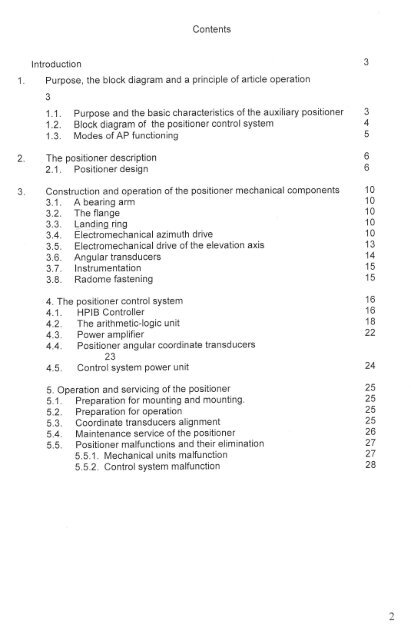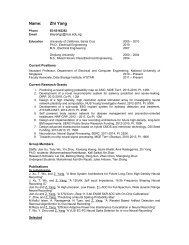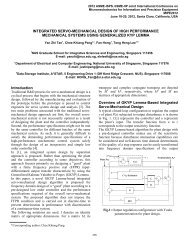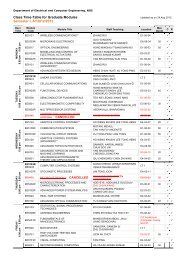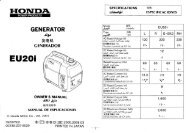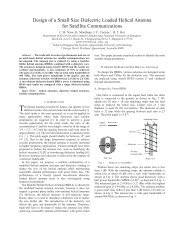Aux Positioner Lecture Notes
Aux Positioner Lecture Notes
Aux Positioner Lecture Notes
Create successful ePaper yourself
Turn your PDF publications into a flip-book with our unique Google optimized e-Paper software.
1.<br />
2.<br />
3.<br />
lntroduction<br />
Contents<br />
Purpose, the block diagram and a principle of article operation<br />
3<br />
1.1. Purpose and the basic characteristics of the auxiliary positioner<br />
1.2. Block diagram of the positioner control system<br />
'1.3. Modes of AP functioning<br />
The positioner description<br />
2.1. <strong>Positioner</strong> design<br />
Construction and operation of the positioner mechanical components<br />
3.1. Abearingarm<br />
3.2. The flange<br />
3.3. Landing ring<br />
3.4. Electromechanical azimuth drive<br />
3.5. Electromechanical drive of the elevation axis<br />
3.6. Angulartransducers<br />
3.7. Instrumentation<br />
3.8. Radome fastening<br />
4. The positioner control sYstem<br />
4.1. HPIB Controller<br />
4.2. The arithmetic-logic unit<br />
4.3. Power amplifier<br />
4.4. <strong>Positioner</strong>angularcoordinate transducers<br />
23<br />
4.5. Control sYstem Power unit<br />
5. Operation and servicing of the positioner<br />
5.1. Preparation for mounting and mounting.<br />
5.2. Preparation for oPeration<br />
5.3. Coordinate transducers alignment<br />
5.4. Maintenance service of the positioner<br />
5.5. <strong>Positioner</strong> malfunctions and their elimination<br />
5.5.1. Mechanical units malfunction<br />
5.5.2. Control system malfunction<br />
3<br />
4<br />
5<br />
6<br />
6<br />
10<br />
10<br />
10<br />
10<br />
10<br />
13<br />
14<br />
15<br />
15<br />
16<br />
16<br />
1B<br />
22<br />
24<br />
25<br />
25<br />
25<br />
25<br />
26<br />
27<br />
27<br />
28


